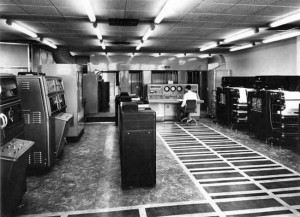 Technology Glitch
Technology Glitch
A massive “Computer Glitch” at RBS group has caused incredible disruption to customers and has taken a long time to fix. Is this as a result of lack of investment in technology and the desire to constantly drive costs from running IT?
I understand that RBS/NatWest had just finished a massive restructuring and outsourcing of its technical teams so it is definitely an area to look at for fault.
As someone who works in the IT field I have seem first hand how business has expected IT year after year to reduce its costs. If it were a function that what not so important to businesses then I could understand it but IT is now THE fundamental tool that runs the business and banks more so. As a result of this constant race to the bottom more and more of the intellectual property of the business has been sold off.
I am a strong believer in Strategic outsourcing however you should only ever outsource “commodity skills”. For example installing and supporting desktops is something that lends its self to an outsourced model. However is you need to have an understanding of the technology AND how the business uses that technology then it is not really something you should outsource, as that is the intellectual property of the business.
From reading the press it appears that this fundamental rule has not been followed with the RBS issue and a technology that was outsourced needed a thorough understanding of how it all worked together and not just the technology skill.
One question I would like someone to ask the executives of RBS is how much this will costs and how does this compare with the savings that were made.
As well as the news about RBS I heard on Radio 4 from Wilbur Ross, the US billionaire who has worked with Virgin Money on buying the Northern Rock business and he stated that the big banks in the UK have invested so little in technology that none of them are really prepared for the demands of the 21st Century.
Putting the two news items together you have to ask yourself where is the next Technology issue with the banks coming from? Who will be next?
UPDATE 28/6/2012 – Following on from my article yesterday Martin Taylor, the former chief executive of Barclays, stated that “There’s not much to a bank except its licence, computer systems and reputation” . So based on that its all pretty damaging for RBS.








Time to Change Systems
What these banks have done is apply sticking plaster to a gaping wound. The original systems were never designed for the 24/7 365 model. What these people should have done is invested when times were good and position themselves for the 21st-century.
We probably at the point now where the replacement of these systems is inevitable or even will be mandated by government.
As an independent IT consultant I welcome the challenge should these be presented to us. We certainly have the expertise within the UK to undertake such an endeavour.
If the investment is too big for one bank then why don’t the banks get together and specify and build a standard banking system. Adopting a standard system would enable certain controls and reporting to be mandated and if this is done in concert with the government regulation could be built into the system is as well as the controls.
We really can’t afford to put off these issues to the future. Every time a bank tries to upgrade standard software that comprise part of the batch system the risk of it going wrong increases.
As these systems get older and older the intellectual property of the bank is diminishing as people retire, get outsourced and leave. There has to be a point at which this must be done to such critical systems. We are trying to run 21st-century finance systems with late 20th century technology.